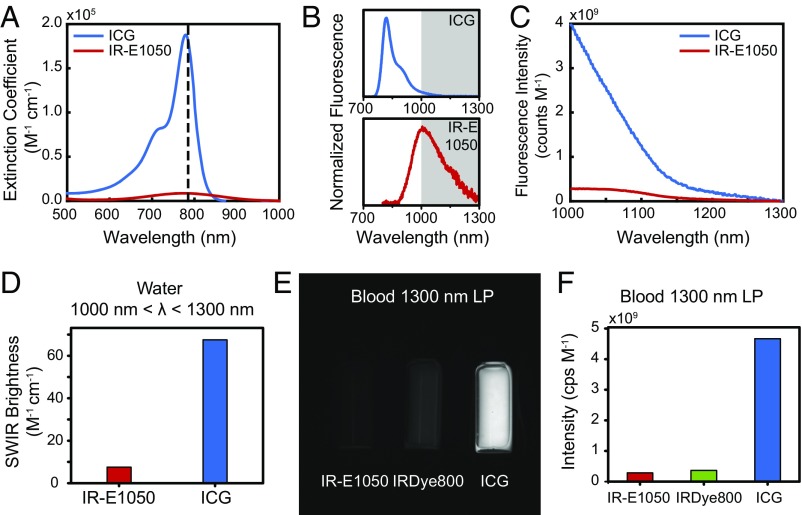Fig. 2.
Comparison of the optical properties of ICG with those of other NIR and SWIR dyes. (A) Normalized to identical molar concentrations, ICG absorbs much stronger at 785-nm excitation (dashed line) than IR-E1050, a commercially available SWIR dye marketed for in vivo SWIR imaging applications. (B) Thus, although the emission peak of ICG is significantly blue shifted compared with IR-E1050, (C) the measured emission intensity between 1,000 and 1,300 nm normalized to equimolar concentration is 8.7 times higher for ICG than for IR-E1050. (D) This finding was confirmed by calculating the SWIR brightness of ICG and IR-E1050 at wavelengths between 1,000 and 1,300 nm. Multiplying the independently measured fluorescence quantum yield, the maximum absorption cross-section, and the ratio of the number of photons emitted between 1,000 and 1,300 nm to the total number of emitted photons of both dyes shows that ICG is roughly nine times brighter than IR-E1050. (E) We further compared the fluorescence intensity of IR-E1050 (0.01 mg/mL) with that of IRDye 800CW PEG (0.01 mg/mL; not accounting for PEG shell of 25–60 kDa) and that of ICG (0.01 mg/mL) in bovine blood on an SWIR camera with a 1,300-nm long-pass (LP) filter. (F) Normalized to equimolar concentrations, the imaged intensity of the NIR dyes is greater than IR-E1050. SDs for signal intensity were found to be less than 5%. Fig. S2 and Movie S1 show comparisons in water and in vivo.

